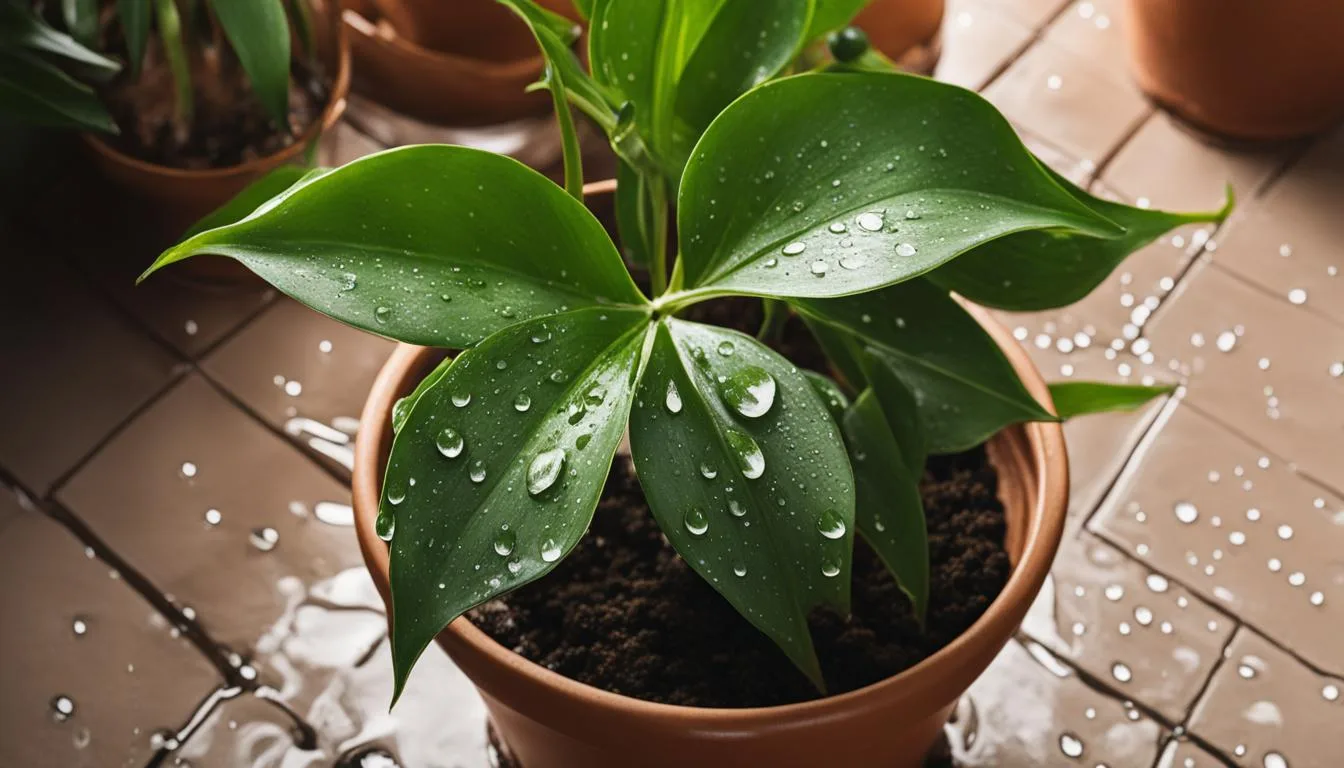
Greetings! If you’re looking to enhance your indoor space with a touch of green, caring for umbrella plants is a fantastic choice. These luscious green beauties, also known as Schefflera arboricola, not only add a vibrant touch to any room but also offer numerous benefits for your well-being. To ensure your umbrella plant thrives and stays healthy, it’s crucial to follow the right care strategies.
In this guide, I will walk you through the essential steps for maintaining and nurturing your umbrella plant, from watering techniques to ideal lighting conditions, pruning methods, and more. Let’s dive in!
Key Takeaways
- Proper watering is crucial for umbrella plants. Allow the soil to dry out between waterings to prevent root rot.
- Umbrella plants thrive in bright, indirect light. Avoid placing them in full sun to prevent leaf burn.
- Maintain temperatures between 65 and 85 degrees Fahrenheit for optimal growth.
- Feed your umbrella plant with a balanced houseplant fertilizer every two weeks during the active growing season.
- Prune and propagate your umbrella plant as needed to control its size and shape.
Understanding Schefflera Care
When it comes to caring for your Schefflera plant, also known as the umbrella plant, a little knowledge goes a long way. By understanding the specific care requirements, you can ensure that your umbrella plant thrives and remains healthy. Here are some essential tips and instructions for caring for your Schefflera:
Watering:
Schefflera plants like their soil to dry out slightly between waterings. Stick your finger about an inch into the soil—if it feels dry, it’s time to water. Be careful not to overwater, as this can lead to root rot. Remember, it’s better to underwater than to overwater your umbrella plant.
Light:
Place your umbrella plant in a location that receives bright, indirect light. Scheffleras thrive in bright, filtered light, but direct sunlight can scorch the leaves. Consider placing your plant near a window with sheer curtains for optimal light conditions.
Temperature and Humidity:
Umbrella plants prefer temperatures between 65 and 85 degrees Fahrenheit. Avoid exposing them to temperatures below 60 degrees Fahrenheit, as this can cause leaf damage. To maintain the ideal humidity level, mist your plant regularly or use a humidifier to create a moist environment.
| Care Aspect | Instructions |
|---|---|
| Watering | Allow soil to dry between waterings to avoid overwatering and root rot. |
| Light | Provide bright, indirect light and avoid direct sunlight to prevent leaf burn. |
| Temperature and Humidity | Maintain temperatures between 65 and 85 degrees Fahrenheit, and moderate to high humidity levels. |
| Fertilizing | Feed with a balanced houseplant fertilizer every two weeks during the active growing season. |
| Pruning | Prune as needed to control size and shape, making clean cuts above leaves or nodes. |
| Propagation | Take stem cuttings and root them in water or soil for propagation. |
| Repotting | Repot into a larger container with well-draining soil in the spring or early summer. |
| Common Issues | Monitor for pests and diseases, and address promptly with appropriate treatment methods. |
| Winter Care | Adjust watering and fertilizing routines to accommodate reduced growth during the winter months. |
| Reviving a Wilting Plant | Adjust watering, light, and temperature conditions, and consider pruning and repotting if necessary. |
By following these instructions and guidelines, you can ensure that your umbrella plant remains happy and healthy. With proper care, your Schefflera can thrive and become a striking focal point in your home or office.
Watering Your Umbrella Plant
Proper watering is essential for maintaining the health and vitality of your umbrella plant. Follow these watering guidelines to ensure that your plant thrives:
- Check the soil moisture: Before watering your umbrella plant, check the moisture level of the soil. Insert your finger about an inch into the soil to feel if it is dry or moist. This will help you determine if your plant needs watering.
- Allow the soil to dry out: Umbrella plants prefer slightly dry conditions, so it’s important to let the soil dry out between waterings. Avoid overwatering, as this can lead to root rot and other issues.
- Water thoroughly: When watering, make sure to thoroughly soak the soil until water drains out of the bottom of the pot. This ensures that the roots receive enough moisture.
- Drain excess water: After watering, make sure to remove any excess water that collects in the saucer or tray beneath the pot. Standing water can lead to root rot and other fungal diseases.
By following these simple watering tips, you can provide your umbrella plant with the proper care it needs to thrive.
Watering Frequency
| Season | Watering Frequency |
|---|---|
| Spring and summer | Water when the top inch of soil feels dry |
| Fall and winter | Water sparingly, allowing the soil to dry out more between waterings |
Remember, every plant is different, so it’s important to monitor your umbrella plant’s specific needs and adjust your watering routine accordingly. With proper watering, your umbrella plant will thrive and bring beauty to your indoor space.
Providing the Right Light for Your Umbrella Plant
When it comes to caring for umbrella plants, providing the right amount of light is crucial. These plants thrive in bright, indirect light, making it essential to choose the proper location for your plant. Placing your umbrella plant near a window with filtered light is ideal. You can also use sheer curtains to help diffuse direct sunlight and prevent leaf burn.
Light Requirements
Umbrella plants require bright, indirect light to grow and thrive. It’s important to find a balance between too much and too little light. Exposing your plant to direct sunlight can scorch the leaves, while insufficient light can cause leggy growth and leaf drop. Aim for a location where your plant receives bright, indirect light for several hours each day.
Lighting Tips
- Place your umbrella plant near a north or east-facing window to provide it with bright, indirect light.
- If you have a south or west-facing window, use sheer curtains to filter the intense sunlight.
- Avoid placing your umbrella plant in a spot with direct afternoon sun, as this can be too harsh.
- Rotate your plant regularly to ensure even light exposure and prevent lopsided growth.
The Effects of Insufficient Light
If your umbrella plant doesn’t receive enough light, it may begin to show signs of stress. Some common indications of insufficient light include:
- Leggy growth with elongated stems and sparse foliage.
- Leaf drop, where the lower leaves start to yellow and fall off.
- Pale or faded foliage color.
- Stunted growth and lack of new leaves.
If you notice these signs, consider moving your plant to a brighter location or providing supplemental artificial lighting, such as a grow light, to meet its light requirements.
| Lighting Conditions | Effects on Umbrella Plant |
|---|---|
| Bright, indirect light | Ideal conditions for growth and vibrant foliage |
| Insufficient light | Leggy growth, leaf drop, pale foliage, stunted growth |
| Direct sunlight | Leaf burn, scorching of foliage |
By providing the right amount of light for your umbrella plant, you can ensure its healthy growth and beautiful foliage. Remember to observe your plant’s response to its current lighting conditions and make adjustments as needed to create an optimal environment.
Maintaining the Ideal Temperature and Humidity
Proper temperature and humidity levels are essential for the health and well-being of your umbrella plant. Maintaining the ideal conditions will help your plant thrive and prevent common issues.
Temperature
Umbrella plants prefer temperatures between 65 and 85 degrees Fahrenheit. It’s important to avoid exposing your plant to temperatures below 60 degrees Fahrenheit, as this can cause leaf damage and hinder growth. If your home gets too cold, consider moving your plant to a warmer location or using a heating mat to provide supplemental warmth during colder months.
Humidity
Umbrella plants thrive in moderate to high humidity levels. If the air in your home is dry, especially during winter months when central heating is on, it’s beneficial to increase humidity around your plant.
You can use a humidifier to add moisture to the air or place a tray filled with water near your plant to create a humid microclimate. Another option is misting the leaves of your umbrella plant with water to increase humidity temporarily.
By maintaining the ideal temperature and humidity levels, you’ll create a comfortable environment for your umbrella plant, promoting healthy growth and preventing common issues associated with improper climate conditions.
| Temperature | Humidity |
|---|---|
| 65-85 degrees Fahrenheit | Moderate to high |
| Avoid | Use a humidifier or humidity tray |
Tips for Umbrella Plant Care
When it comes to caring for your umbrella plant, there are a few key tips to keep in mind. By following these instructions, you can ensure that your plant stays healthy and thrives in its indoor environment.
Proper Watering
One of the most important aspects of umbrella plant care is proper watering. It’s crucial to allow the soil to dry out between waterings to prevent overwatering and potential root rot. Check the soil with your finger or a moisture meter before watering, and only water when the top couple of inches of soil feel dry. Remember, it’s better to underwater than to overwater your umbrella plant.
Providing Adequate Light
Umbrella plants thrive in bright, indirect light. Place your plant near a window with filtered light, or use sheer curtains to diffuse direct sunlight. Avoid exposing your umbrella plant to full sun, as this can lead to leaf burn. By providing the right amount of light, you can ensure optimal growth and prevent any damage to the leaves.
Appropriate Fertilization
Fertilizing your umbrella plant is another essential aspect of care. Use a balanced houseplant fertilizer every two weeks during the active growing season. Follow the manufacturer’s instructions to dilute the fertilizer properly. However, during the winter months when growth slows down, it’s best to avoid fertilizing your plant.
By following these tips for umbrella plant care, you can enjoy a thriving and beautiful plant in your home. Remember to adjust your watering, light, and fertilization routines based on the specific needs of your umbrella plant. With a little attention and care, your umbrella plant will continue to bring beauty and freshness to your space.
Pruning and Propagating Your Umbrella Plant
Pruning your umbrella plant is an essential part of maintaining its health and appearance. By removing dead or damaged leaves, you can promote new growth and prevent disease from spreading. To prune your plant, use sharp scissors or pruners to make clean cuts just above the leaves or nodes.
If you’d like to propagate your umbrella plant and create new plants, stem cuttings are a simple and effective method. Choose a healthy stem with several leaves, and make a clean cut just below a leaf node.
Place the cutting in a glass of water or directly into moist potting soil, and keep it in a warm and bright location. Within a few weeks, you should see roots starting to form, indicating successful propagation.
Pruning Umbrella Plant:
When pruning your umbrella plant, keep the following tips in mind:
- Remove any yellowing or brown leaves to maintain the plant’s overall appearance.
- Trim back long or leggy stems to encourage bushier growth.
- Regularly check for signs of pests or disease while pruning, and take appropriate action if necessary.
Propagating Umbrella Plant:
If you’re interested in propagating umbrella plants, follow these steps:
- Select a healthy stem with several leaves.
- Make a clean cut just below a leaf node.
- Place the cutting in water or moist potting soil.
- Keep the cutting in a warm and bright location.
- Monitor the cutting for root development, and transplant it into a new pot once roots have formed.
| Pruning and Propagation Tips | |
|---|---|
| Pruning | Propagation |
| Remove dead or damaged leaves | Select a healthy stem with leaves |
| Trim back long or leggy stems | Cut just below a leaf node |
| Check for signs of pests or disease | Place the cutting in water or moist soil |
| Keep in a warm and bright location | |
| Transplant once roots have formed | |
Maintaining Your Umbrella Plant: Repotting and Ensuring Proper Care
Proper care is essential for maintaining the health and growth of your umbrella plant. In this section, I will guide you through the process of repotting your plant and provide tips for ensuring its overall well-being.
Repotting Your Umbrella Plant
As your umbrella plant grows, it may outgrow its current pot. Repotting allows for better root development and prevents the plant from becoming root-bound. When repotting your umbrella plant, follow these steps:
- Choose a pot that is one size larger than the current one.
- Ensure the new pot has drainage holes to prevent water from pooling at the roots.
- Prepare a well-draining potting mix that includes peat moss, perlite, and compost.
- Carefully remove the plant from its current pot, gently loosening the roots.
- Place the plant in the new pot and fill it with the potting mix, ensuring that the plant is at the same level as before.
- Water the plant thoroughly and place it in a location with bright, indirect light.
Ensuring Proper Care for Your Umbrella Plant
In addition to repotting, there are other key aspects to consider for maintaining the health of your umbrella plant:
- Watering: Be sure to water your umbrella plant evenly, allowing the soil to dry out slightly between waterings. Avoid overwatering, as it can lead to root rot.
- Light: Place your umbrella plant in a location with bright, indirect light. Avoid exposing it to direct sunlight, as it can scorch the leaves.
- Temperature and Humidity: Maintain a temperature range between 65 and 85 degrees Fahrenheit. Provide moderate to high humidity levels by using a humidifier or placing the plant on a tray filled with water and pebbles.
- Fertilizing: Feed your umbrella plant with a balanced houseplant fertilizer every two weeks during the active growing season. Dilute the fertilizer according to the manufacturer’s instructions.
- Pruning: Remove any yellowing or damaged leaves to maintain the plant’s appearance and encourage new growth.
By following these repotting and care tips, you can ensure that your umbrella plant remains healthy and thrives in its new pot.
Common Issues and Troubleshooting
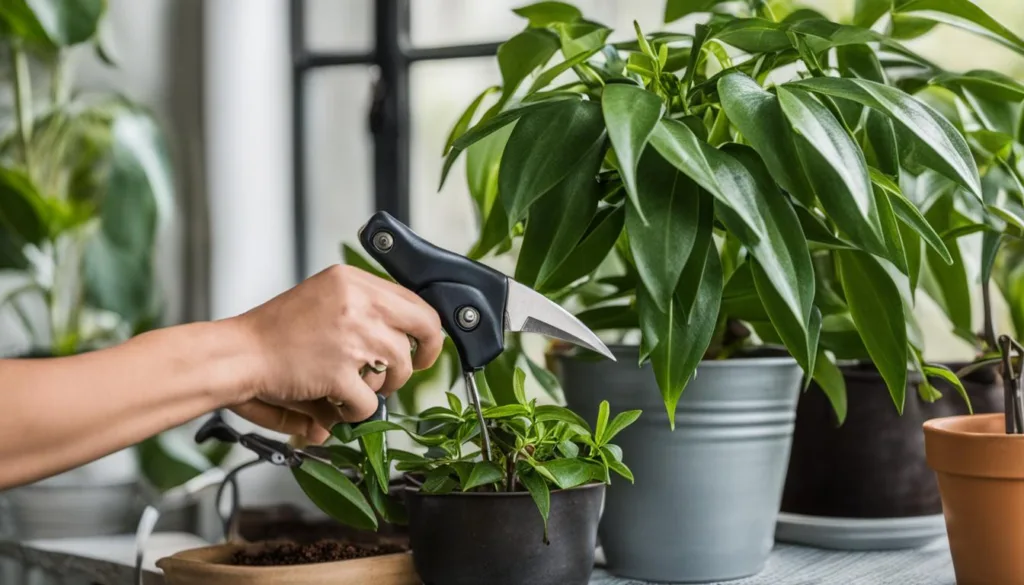
Caring for umbrella plants requires attention to potential issues that may arise. By being proactive and addressing these problems promptly, you can maintain the health and vitality of your plant. Below are some common issues you may encounter while maintaining umbrella plants and troubleshooting methods to resolve them.
Pests and Diseases
Umbrella plants are susceptible to various pests and diseases that can affect their overall well-being. Some common pests include spider mites, scale insects, mealybugs, and aphids. To identify and address these issues:
- Inspect your plant regularly for signs of pests, such as webbing, small insects, or sticky residue on the leaves.
- Isolate any infested plants to prevent the spread of pests to other houseplants.
- Utilize organic solutions, such as insecticidal soap or neem oil, to combat pest infestations.
If your umbrella plant becomes infected with a disease, such as root rot or leaf spot, it is essential to take immediate action. Remove any affected leaves or stems and adjust your watering routine to prevent further spread. Consider applying a fungicide recommended for your specific plant disease.
Overwatering and Underwatering
Both overwatering and underwatering can cause issues for umbrella plants. Overwatering can lead to root rot, while underwatering can result in wilting and leaf drop. To avoid these problems:
- Check the moisture level of the soil regularly. Stick your finger about an inch deep into the soil – if it feels dry, it’s time to water.
- Ensure your plant is in a well-draining pot with holes at the bottom to prevent waterlogged soil.
- Water thoroughly but allow the soil to dry out slightly between waterings.
Environmental Factors
Environmental factors can impact the health of your umbrella plant. Here are some common issues related to light, temperature, and humidity:
- Insufficient light can cause your plant to become leggy or develop small, pale leaves. Move your umbrella plant closer to a window with filtered light or provide supplemental artificial lighting.
- Extreme temperatures can stress your plant. Avoid exposing it to drafts or temperatures below 60 degrees Fahrenheit.
- Umbrella plants thrive in moderate to high humidity. Use a humidifier or place your plant on a humidity tray to create a suitable environment.
By addressing these common issues and troubleshooting methods, you can effectively care for your umbrella plants, ensuring their long-term health and beauty in your home.
| Issue | Troubleshooting Methods |
|---|---|
| Pests | – Regularly inspect your plant for signs of pests – Isolate and treat infested plants – Use organic solutions like insecticidal soap or neem oil |
| Diseases | – Remove affected leaves or stems – Adjust watering routine to prevent further spread – Apply recommended fungicide |
| Overwatering | – Check soil moisture regularly – Ensure well-draining pot with holes – Water thoroughly but allow soil to dry slightly |
| Underwatering | – Check soil moisture regularly – Water thoroughly when dry – Consider using self-watering system or irrigation timer |
| Insufficient Light | – Move plant closer to window or provide supplemental lighting – Rotate plant to ensure even light exposure |
| Extreme Temperatures | – Avoid exposing plant to drafts or temperatures below 60°F – Provide insulation during colder months |
| Low Humidity | – Use humidifier or humidity tray – Mist plant regularly – Group plants to create a microclimate |
Caring for Umbrella Plants in Winter
During the winter months, caring for umbrella plants requires some adjustments to accommodate the plant’s reduced needs. As the temperature drops and daylight hours shorten, the plant’s growth slows down, and its water and nutrient requirements decrease.
By understanding the specific care needs of umbrella plants in winter, you can ensure that your plant remains healthy and thriving.
When it comes to watering your umbrella plant during winter, it’s important to let the soil dry out more between waterings. This helps prevent overwatering, which can lead to root rot and other issues.
Use your finger or a moisture meter to check the soil’s moisture level before watering. If the top inch or two of soil feels dry, it’s time to water your plant.
In terms of light requirements, it’s best to place your umbrella plant in a location with bright, indirect light. Although these plants can tolerate lower light conditions, it’s still important to provide them with sufficient light during winter.
You may need to move your plant closer to a window or provide additional artificial light to ensure it receives an adequate amount of light.
During winter, avoid exposing your umbrella plant to cold drafts or temperatures below 60 degrees Fahrenheit. Cold air can cause damage to the leaves and overall health of the plant. If necessary, move your plant away from drafty windows or doors to provide it with a more stable temperature environment.
Winter Care Tips for Umbrella Plants
| Aspect | Winter Care Tips |
|---|---|
| Watering | Allow the soil to dry out more between waterings to prevent overwatering. |
| Light | Place the plant in a location with bright, indirect light or supplement with artificial light. |
| Temperature | Avoid exposing the plant to cold drafts or temperatures below 60 degrees Fahrenheit. |
By following these winter care tips and being attentive to your umbrella plant’s specific needs, you can ensure that it thrives even during the colder months. Remember to monitor your plant closely for any signs of stress or issues, such as yellowing leaves or pest infestations, and take appropriate action to address them promptly. With proper care, your umbrella plant will continue to bring beauty and greenery to your indoor space all year round.
Tips for Reviving a Wilting Umbrella Plant
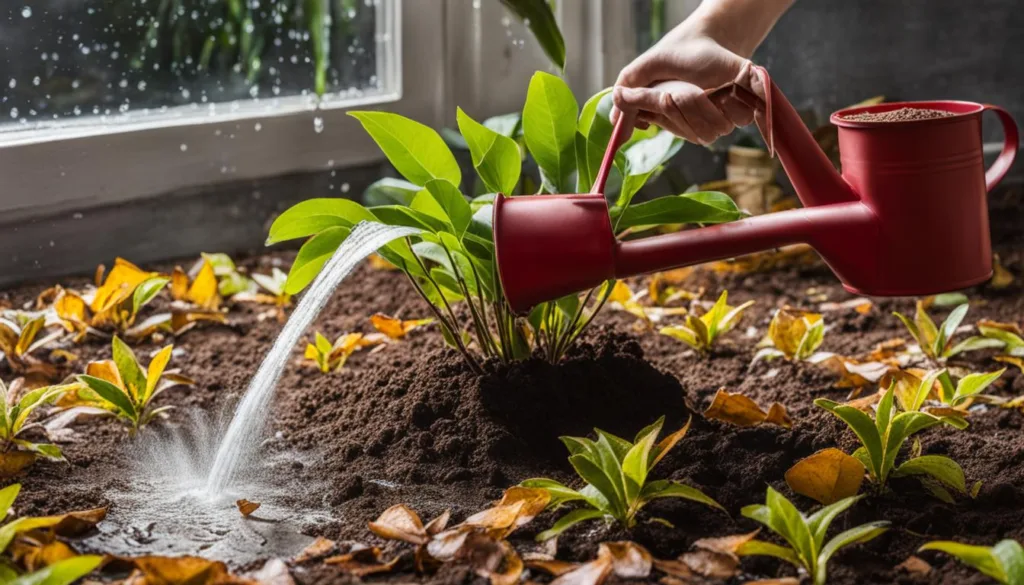
If you notice that your umbrella plant is wilting or showing signs of distress, it’s important to take action quickly to revive it. By addressing the underlying issues and providing proper care, you can help your plant recover and thrive once again.
1. Adjust Watering and Drainage
One of the most common reasons for wilting umbrella plants is improper watering. Check the soil moisture level by inserting your finger about an inch deep into the soil. If it feels dry, it’s time to water your plant. However, make sure not to overwater, as this can lead to root rot. Allow the excess water to drain out completely and ensure that the pot has proper drainage holes.
2. Evaluate Light Conditions
Insufficient or excessive light can also cause your umbrella plant to wilt. Place your plant in a location with bright, indirect light. If it’s receiving too much direct sunlight, move it to a spot with filtered light. On the other hand, if the plant isn’t getting enough light, consider placing it closer to a window or supplementing with artificial grow lights.
3. Maintain Optimal Temperature and Humidity
Umbrella plants prefer temperatures between 65 and 85 degrees Fahrenheit, so ensure that the plant is not exposed to extreme temperature fluctuations. Additionally, these plants thrive in moderately humid environments. Use a humidifier or place a tray of water near the plant to increase humidity levels.
4. Prune and Remove Damaged Leaves
If your umbrella plant has wilted or yellowing leaves, it’s important to prune them to stimulate new growth. Use clean, sharp scissors or pruners to remove any damaged or diseased foliage. This will redirect the plant’s energy towards healthy growth.
By following these tips and providing proper care, you can revive your wilting umbrella plant and restore its health. Be patient and consistent in your efforts, and your plant will reward you with lush, vibrant foliage.
As I wrap up this guide on umbrella plant care strategies, I hope you’ve gained valuable insights into maintaining and caring for your umbrella plants. By following these tips and techniques, you’ll be able to ensure the long-term health and beauty of your indoor green companion.
Remember to provide the right amount of water for your umbrella plant, allowing the soil to dry out between waterings to prevent overwatering. Place your plant in a location with bright, indirect light, and maintain temperatures between 65 and 85 degrees Fahrenheit for optimal growth.
Regular fertilizer applications during the active growing season will keep your umbrella plant nourished, while pruning and propagating will help you shape and expand your plant collection. Don’t forget to repot your umbrella plant into a larger container when needed, using a well-draining potting mix.
Lastly, be mindful of common issues and address them promptly to ensure the health of your umbrella plant. With a little love and attention, your umbrella plant will thrive and add beauty to your home or office space. Happy gardening!
FAQ
How often should I water my umbrella plant?
It’s important to allow the soil to dry out between waterings. Check the soil with your finger or a moisture meter to determine if it needs watering. Avoid overwatering, as this can lead to root rot and other issues.
Where should I place my umbrella plant?
Umbrella plants prefer bright, indirect light. Place your plant near a window with filtered light, or use sheer curtains to diffuse direct sunlight. Avoid placing your umbrella plant in full sun, as this can cause leaf burn.
What temperature and humidity levels are ideal for my umbrella plant?
Umbrella plants thrive in temperatures between 65 and 85 degrees Fahrenheit. Avoid exposing your plant to temperatures below 60 degrees Fahrenheit, as this can cause leaf damage. Maintain moderate to high humidity levels around your umbrella plant, using a humidifier or humidity tray if necessary.
How often should I fertilize my umbrella plant?
Feed your umbrella plant with a balanced houseplant fertilizer every two weeks during the active growing season. Dilute the fertilizer according to the manufacturer’s instructions. Avoid fertilizing your plant during the winter months when growth slows down.
How do I prune my umbrella plant?
Prune your umbrella plant as needed to control its size and shape. Use sharp scissors or pruners to make clean cuts above leaves or nodes. You can also propagate your umbrella plant by taking stem cuttings and rooting them in water or soil.
When should I repot my umbrella plant?
As your umbrella plant grows, you may need to repot it into a larger container. Choose a pot with drainage holes to prevent overwatering. Use a well-draining potting mix and repot your plant in the spring or early summer when growth is most active.
What are common pests and diseases that affect umbrella plants?
Umbrella plants can be susceptible to certain pests and diseases. Monitor your plant for signs of spider mites, scale insects, mealybugs, and aphids. Address any issues promptly and follow appropriate treatment methods, such as using insecticidal soap or neem oil.
How should I care for my umbrella plant during winter?
During the winter months, umbrella plants may experience slower growth. Adjust your watering and fertilizing routine to accommodate the plant’s reduced needs. Avoid exposing your umbrella plant to cold drafts or temperatures below 60 degrees Fahrenheit.
What should I do if my umbrella plant starts to wilt?
If your umbrella plant starts to wilt or show signs of distress, there are steps you can take to revive it. Adjust the watering, light, and temperature conditions, and consider repotting the plant if necessary. Pruning any damaged or yellowing leaves can also help stimulate new growth.
How can I ensure the optimal growth and health of my umbrella plant?
With proper care and attention, your umbrella plant can thrive and become a beautiful addition to your indoor space. By following these care strategies and addressing any issues promptly, you can enjoy a healthy and vibrant umbrella plant for years to come.

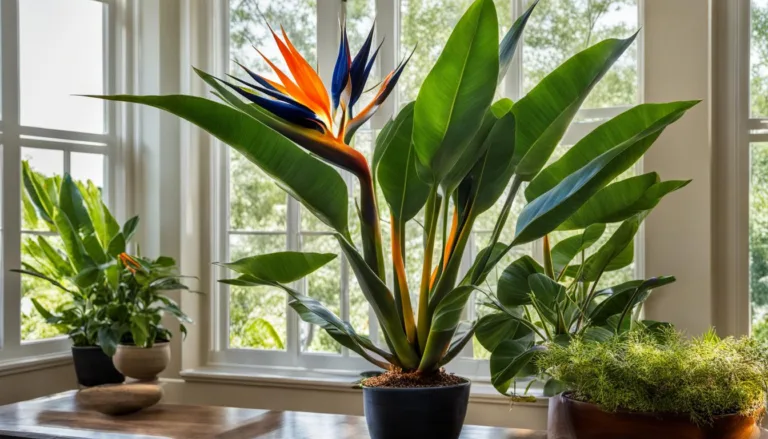
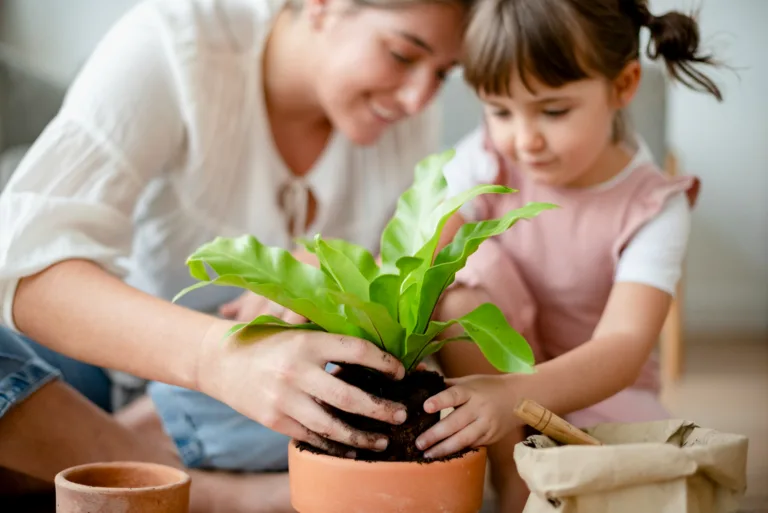
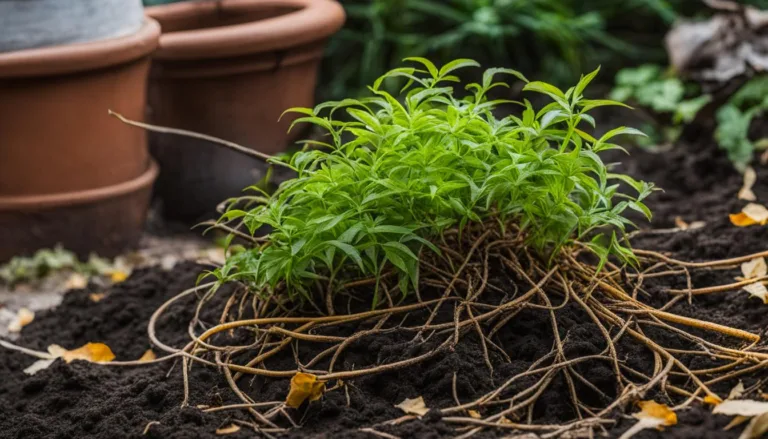
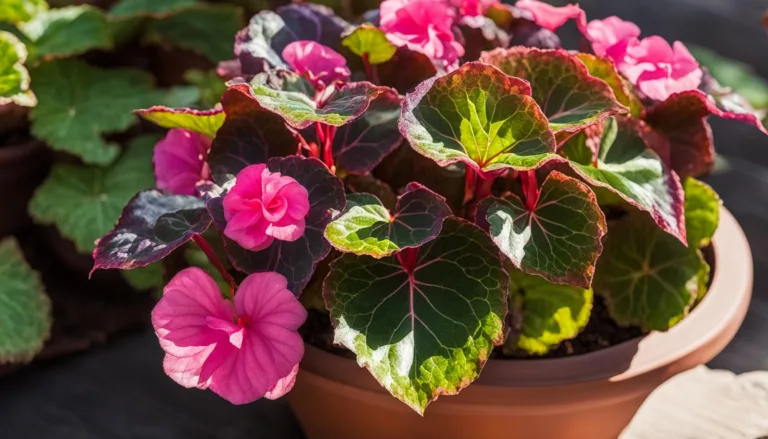
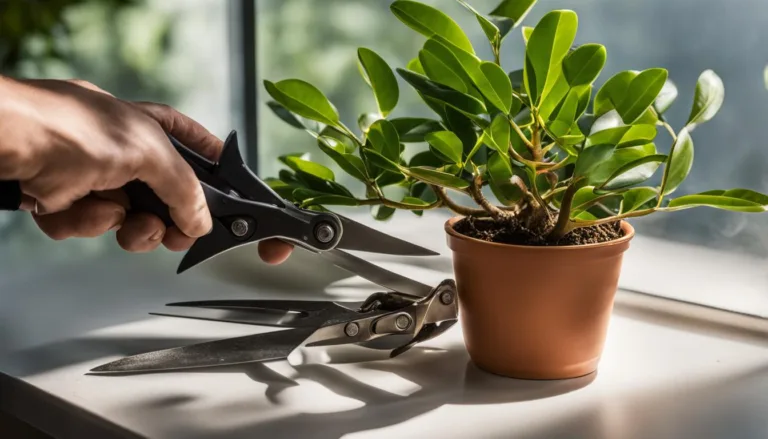
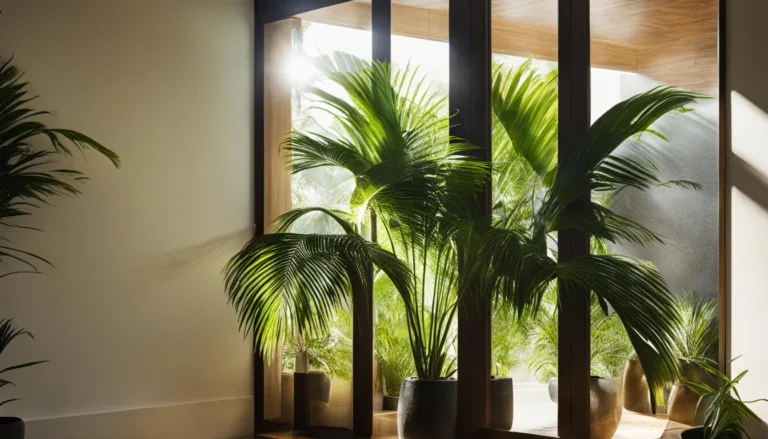
Your article was indeed entertaining. I look forward to further agreeable contributions from you. However, how might we communicate?
Thank you for your comment! Please use the contact us page
I just could not depart your web site prior to suggesting that I really loved the usual info an individual supply in your visitors Is gonna be back regularly to check up on new posts
Wow wonderful blog layout How long have you been blogging for you make blogging look easy The overall look of your site is great as well as the content
I do agree with all the ideas you have introduced on your post They are very convincing and will definitely work Still the posts are very short for newbies May just you please prolong them a little from subsequent time Thank you for the post
This webpage is fabulous. The superb information shows the maker’s earnestness. I’m dazed and envision additional such incredible presents on.